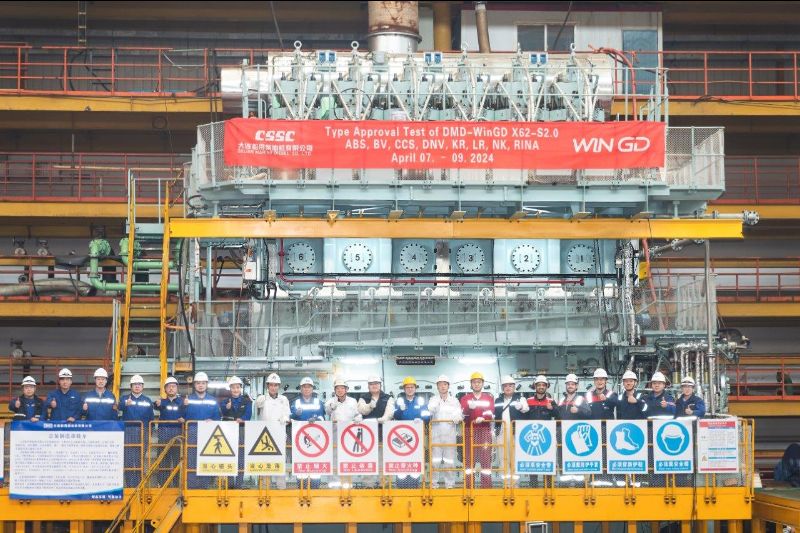
Hapag-Lloyd’s Profit Falls on ‘Disappointing’ Freight Rates
Shanghai Express file photo. Image: Hapag Lloyd
By Nicholas Brautlecht
Nov. 12 (Bloomberg) — Hapag-Lloyd AG said third-quarter profit plunged almost 64 percent as Europe’s fourth-largest container-shipping line confronted low busy-season prices for carrying freight.
Net income dropped to 16.6 million euros ($22.3 million) from 45.6 million euros a year earlier, the Hamburg-based company said in a statement. Average freight rates fell more than 10 percent to $1,476 per standard container.
“The freight-rate developments in the third quarter, the peak season for the liner shipping industry, were very disappointing,” and pressure on pricing continues, Chief Executive Officer Michael Behrendt said in the statement. “The irrational behavior in the industry, which once again caused rates to drop drastically in October, is totally incomprehensible.”
The shipping industry has yet to recover from a global trade slump triggered by the collapse of Lehman Brothers Holdings Inc. in September 2008 and the ensuing sovereign-debt crisis in the euro area. In response to the resulting lower demand for seaborne transport and a glut of vessels, Hapag-Lloyd has set up an industry alliance with Asian competitors, and global market leader Maersk Line is forming one with European peers.
Inland Transport
Hapag-Lloyd re-negotiated prices with container terminals and operators of trains, trucks and barges, who manage the transport of boxes inland, to cut costs and partly offset the effects of low freight rates, the company said. Transport volume rose 8.6 percent to 1.4 million containers, while revenue fell 5.7 percent to 1.66 billion euros.
The company, which with a fleet of 152 vessels is Germany’s biggest container line, reiterated its forecast for positive full-year operating profit. Nine-month earnings jumped more than fourfold from a year earlier to 80.4 million euros.
Hapag-Lloyd, owned by a group of shareholders including German tourism company TUI AG and HSH Nordbank, invested 588.5 million euros in the first nine months of 2013, mostly in ships and containers. It announced price increases for several shipping routes in November and December.
TUI, which owns 22 percent of Hapag-Lloyd, endorses an initial public offering of the shipping business. TUI CEO Friedrich Joussen reiterated on Nov 7 that he doesn’t expect an exit through an IPO before Rolf Habben-Jansen follows Behrendt as CEO at Hapag-Lloyd next July.
CEO Necessity
“The new CEO is the precondition for an IPO,” he told reporters at an economic forum in Hamburg. “If we push too hard, we risk making a bad deal, but we are progressing on the matter.”
Habben-Jansen, currently the head of Maersk’s Damco freight-forwarding arm, will join Hapag-Lloyd’s board in April and become CEO in July, the German company said on Sept. 24.
Hapag-Lloyd has a 4.2 percent market share of the world’s liner fleet, according to Alphaliner. Industry leader Maersk Line, which accounts for 15 percent of vessels, and its two closest competitors, Mediterranean Shipping Co. and CMA CGM SA, plan in the second quarter of 2014 to create the largest container-shipping alliance in history, called P3, to cut costs and end years of overcapacity. Copenhagen-based Maersk is due to report third-quarter results tomorrow.
Hapag-Lloyd formed an alliance in Asia-Europe trade, called G6, in March 2012. The other partners are APL, Hyundai Merchant Marine, Mitsui O.S.K. Lines, Nippon Yusen Kaisha and Orient Overseas Container Line.

Subscribe for Daily Maritime Insights
Sign up for gCaptain’s newsletter and never miss an update
— trusted by our 109,121 members

Get The Industry’s Go-To News
Subscribe to gCaptain Daily and stay informed with the latest global maritime and offshore news

 Join The Club
Join The Club








